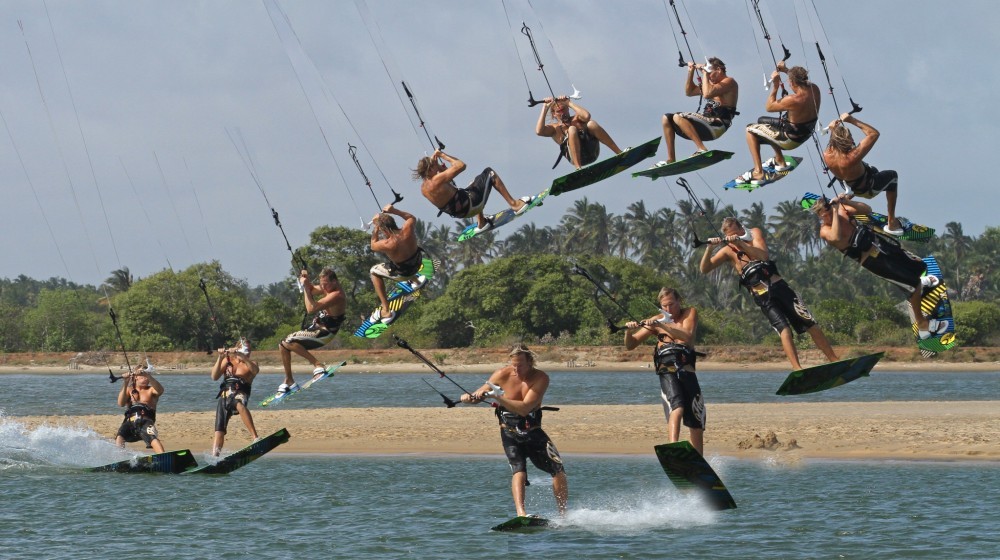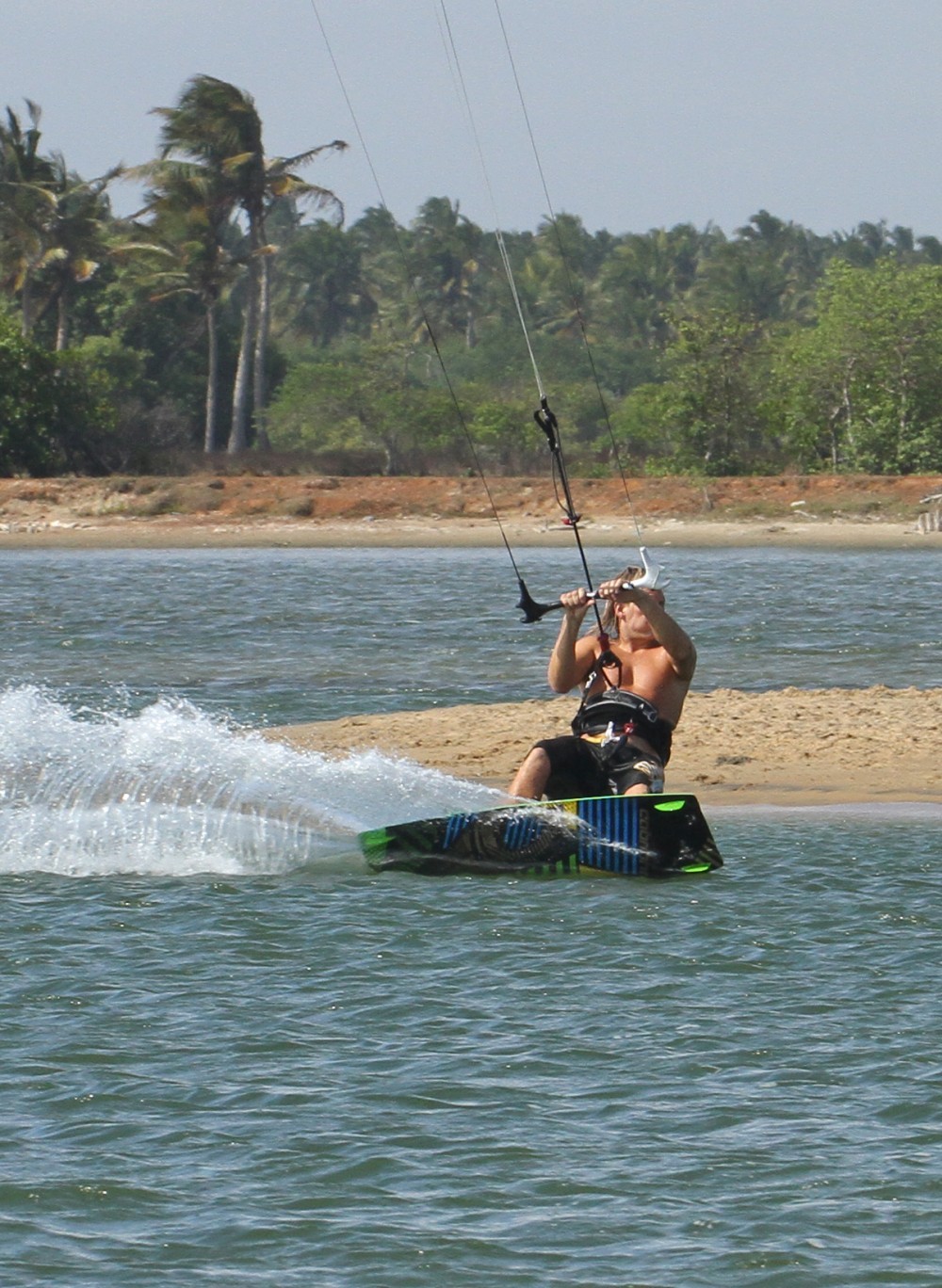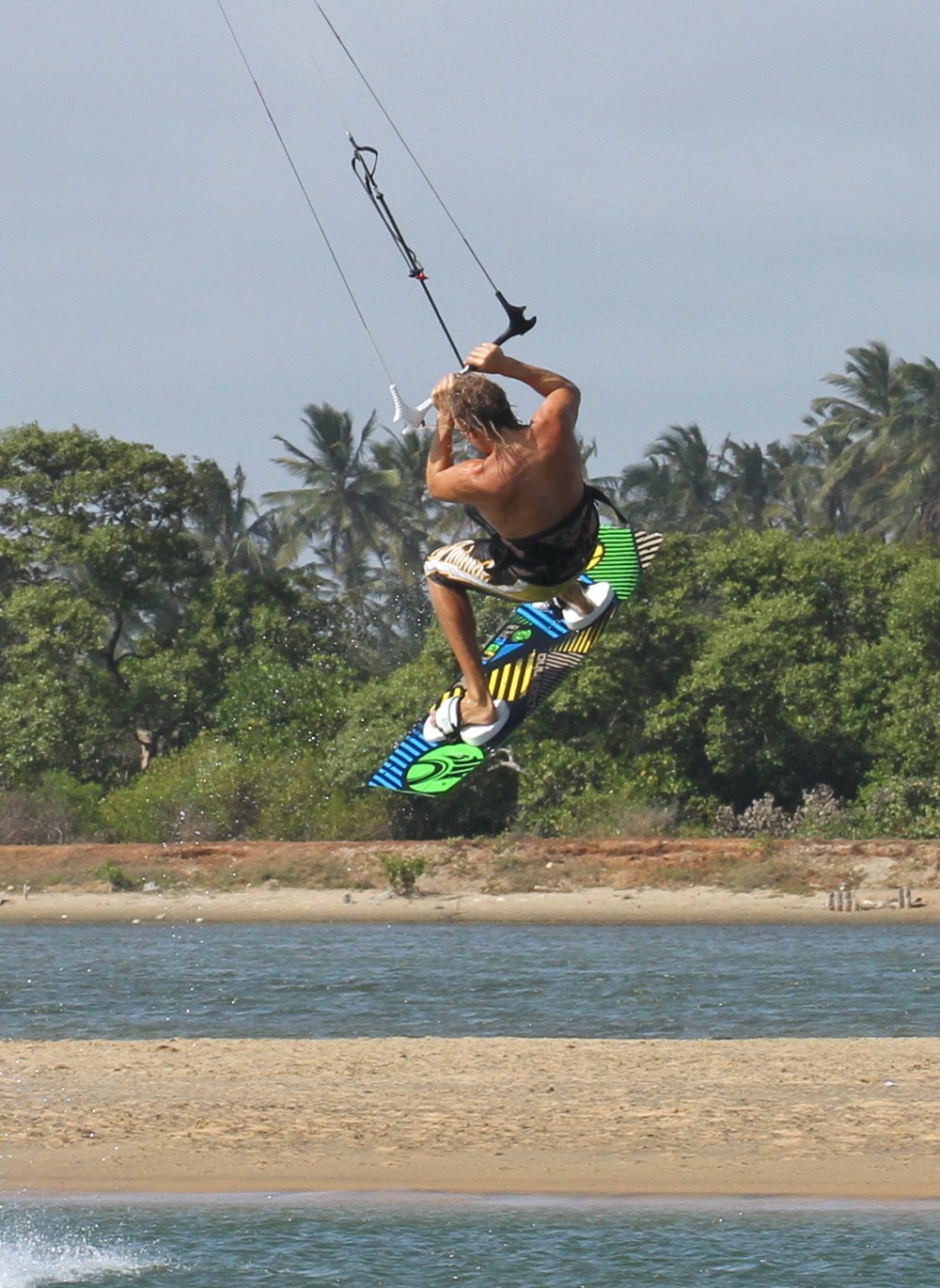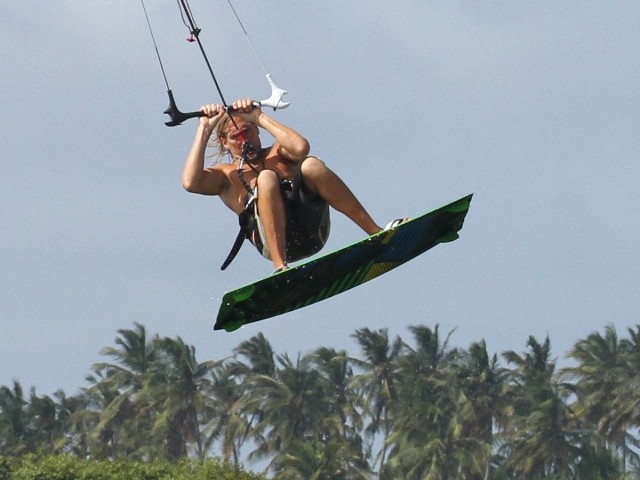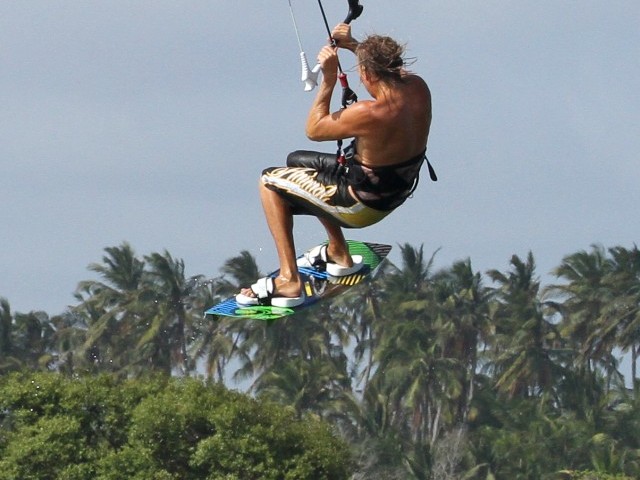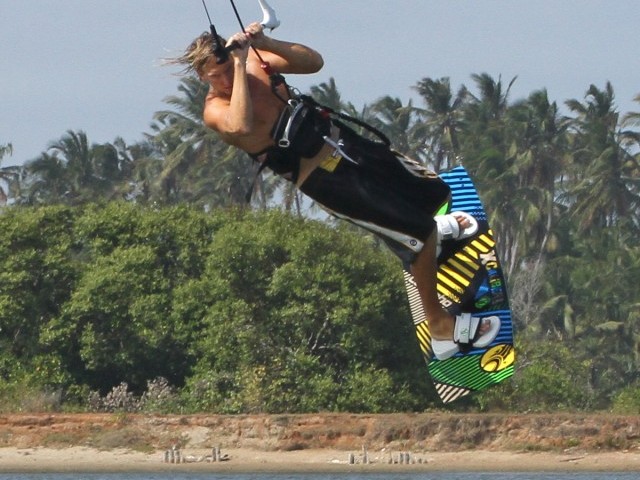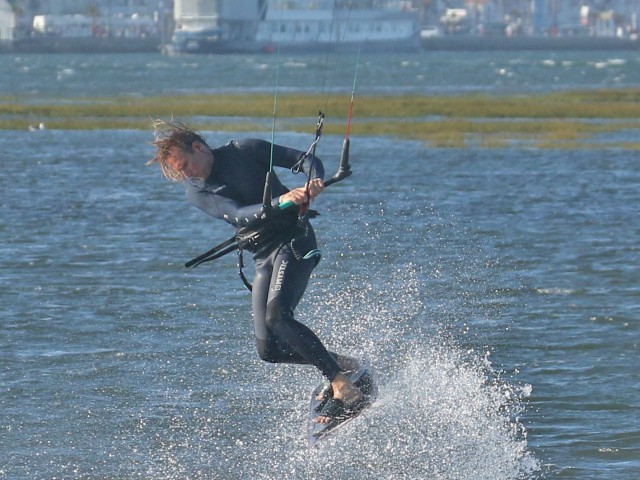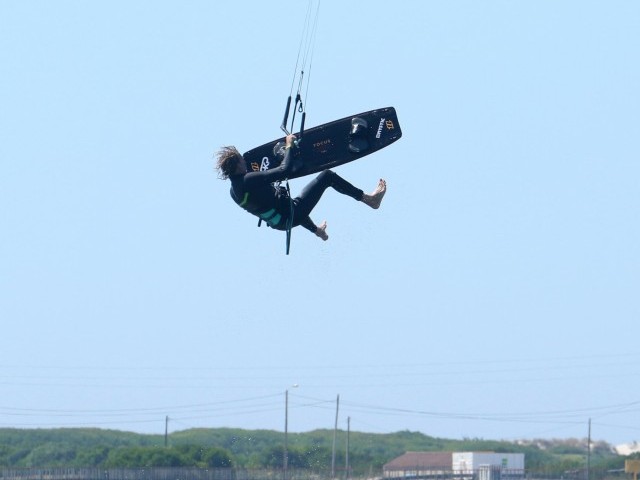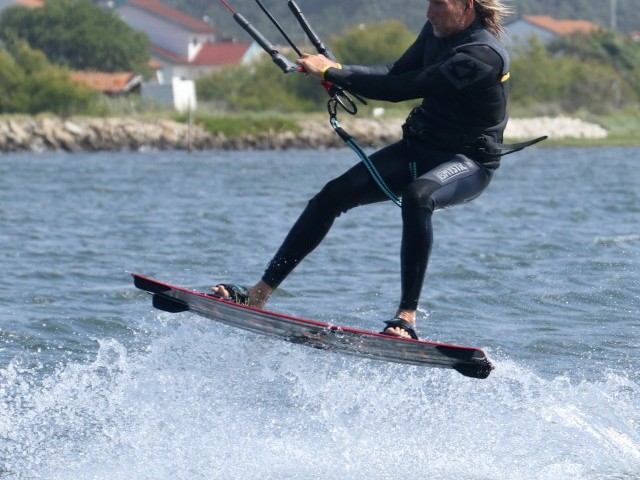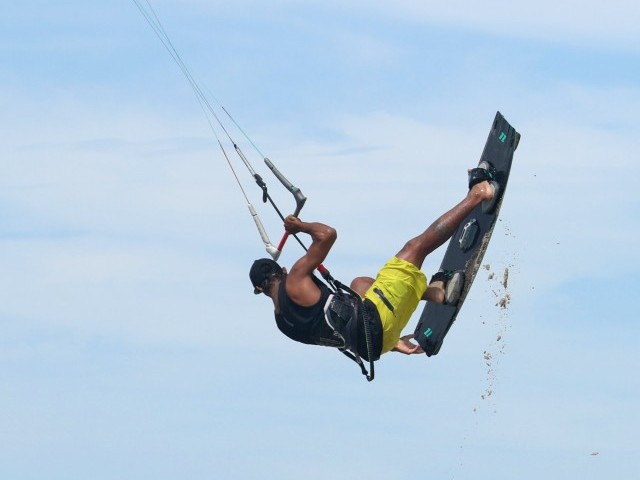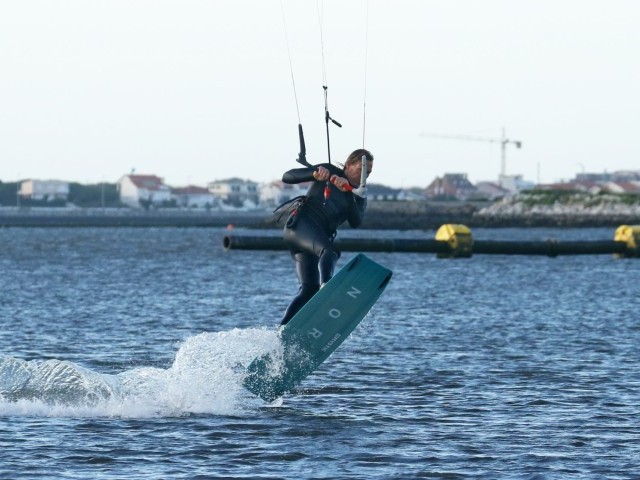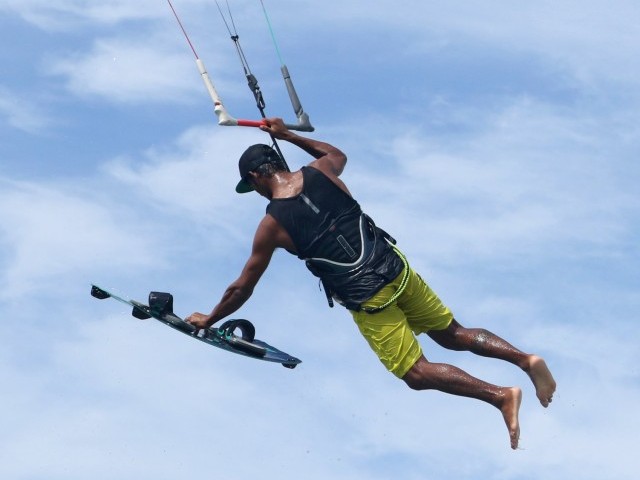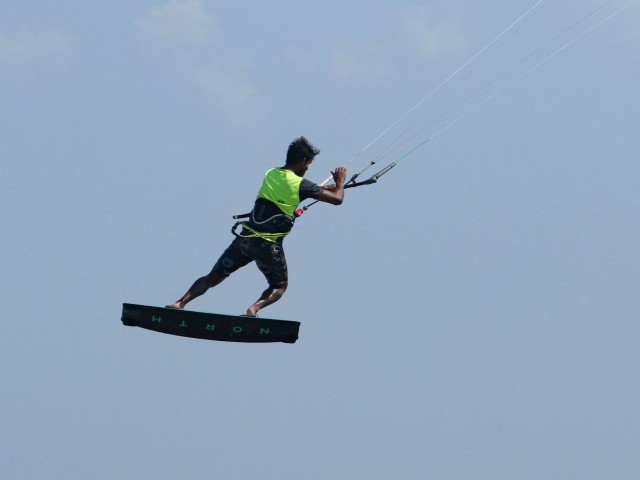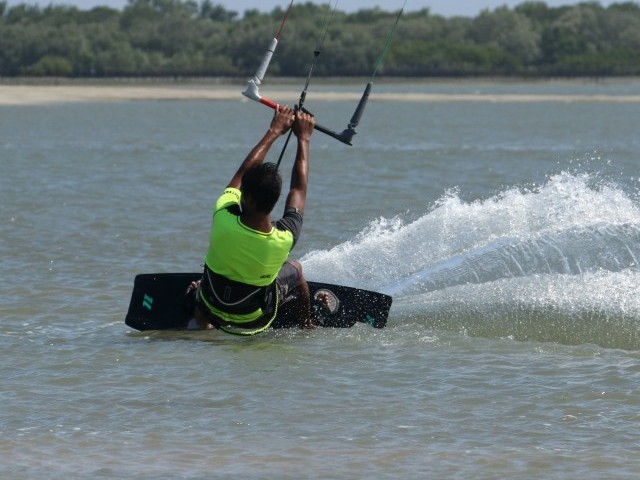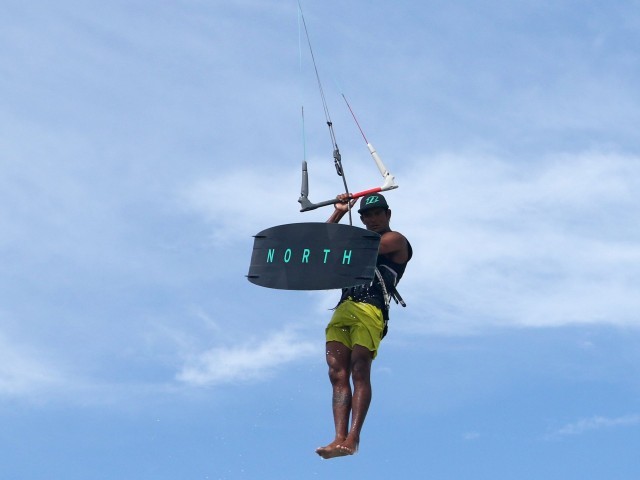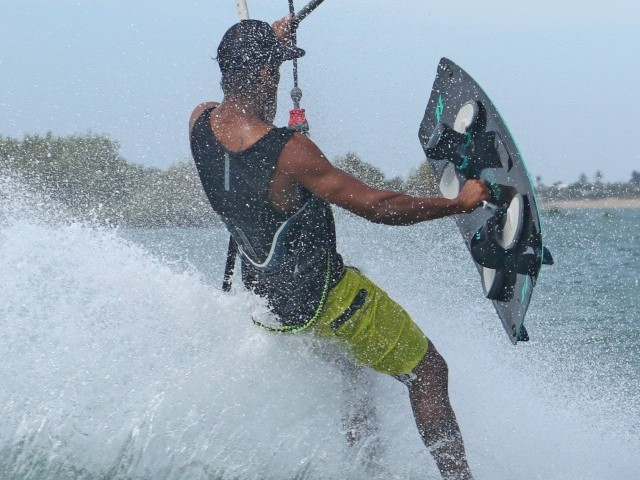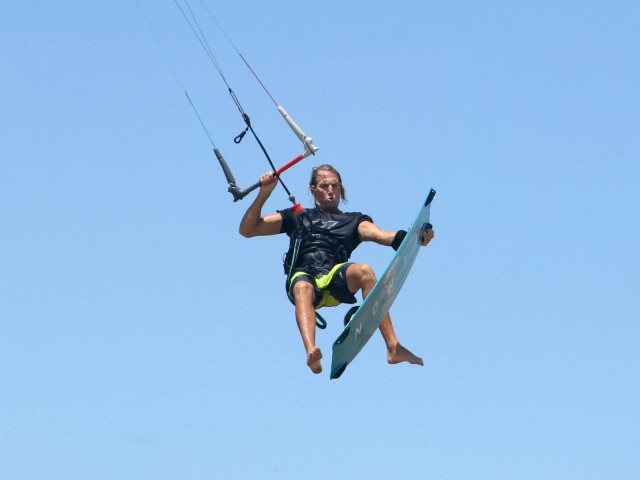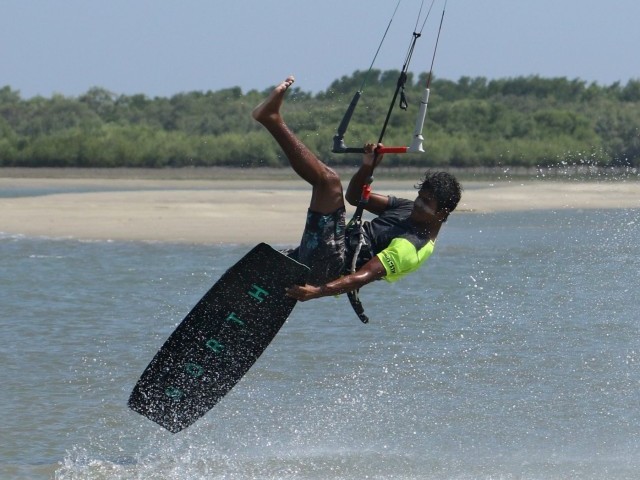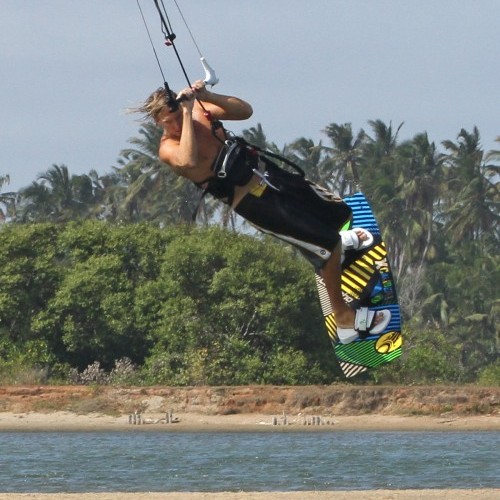
Double Front Loop Down Loop Transition
Technique / Advanced
Introduction
This is a personal favourite on the transition side of life, as it has a lazy feel and an almost slow mo appearance, thanks to the fact you don’t need to turn the full 720˚ as the downloop does a lot of the work for you. As a basis for this we’d suggest having the front loop downloop transition in the bag as then you can concentrate on rotating a bit more aggressively and the timing of the downloop to take you back out the other way, and if you really want to make the learning easier nail the double front too, Issue 32.
You don’t need to go stratospheric for this, but you definitely want some float and a soupcon of forward momentum, so consider this more closely related to a controlled front loop than a simple up and down transition. The mechanics are based on you sending the kite for height, then bringing it back forward and above you for float, and lastly downlooping it as you come down to pull you off downwind and back in the opposite direction. Whilst timing your double front rotation to perfection.
Getting Airborne
You’ll need to approach this as for a normal front rotation. Get you kite down to 11 or 1, get on a comfortable edge with your front leg fairly straight and your back leg resisting so that you can feel your back heel pushing into the pad. From here you can then either send the kite or edge up a bit harder if you’d feel more confident with less speed. Christian has sent the kite from 11 to 1, using both hands, push pull, whilst keeping the power on the sweet spot. Once the kite starts to lift him, he’ll throw himself into his rotation, kicking hard and fast to initiate a decent spin. Don’t bend you back leg before kicking off as this will then loose some of your edge and slow your rotation.
Floating Hang Time
It’s all very good and well leaving the kite behind you and then diving like crazy to land with a single rotation, but for the double you’ll need the parachute effect. This means getting the kite back up to 12 o’clock, so that you’re both suspended and moving forwards with and under the kite. Assuming that you sent the kite back with some gusto, you will need to give it some pull on your front hand to bring it back above you, and for this to work you need tension on your lines. Christian has the bar in so that he can keep control of the kite and is pulling on his front hand to move it forward.
Timing
Your mission is to complete your first rotation by the apex of your jump, and by this time you should have the kite back above you. If this is the case you’ll be suspended in your harness moving forwards, from where you can easily rotate into your second front loop by simply keeping your knees up and turning your head, as you’ll effectively be getting a second lift from your kite or at the very least be floating down gently! The beauty here is that as you’ll be descending slowly on tight lines downlooping the kite will be a doddle, as you’ll be able to feel where the kite is and where it’s going. You can see that Christian has kept himself small and is still pulling on his front hand to progressively move the kite forward. Its important to remember that for any downloop you need to have the kite above you or just in front of you before you pull the trigger, otherwise it’ll downloop behind you and you’ll get no pull and the kite will be too far at the edge of the window.
The Downloop
Ideally your downloop should be progressive and slow, a wide arc, so that the kite completes the loop before you land but still has power to pull you out of the move as it heads up and you have time to steer it back in the other direction, rather than just a quick snap which will result in the kite flying straight back up and your lines slackening. Thus you’ll need to start the downloop a tad earlier than you might think sensible, preferably before you get half way around your second rotation. Here Christian is already pulling on his front hand to get the kite going, but he’s not yanking with all his might, just positive enough so that the kite turns, but not so much that the kite pivots. The bonus here is that as the kite starts to pull, it will help to rotate you, although don’t rely on this, still use your head and keep yourself small. For your first attempts though it will be better to pull too hard than not enough.
Finishing the Job
As the old adage goes, spot your landing. Once you’ve pulled on the front hand you need to get your head around so that you can see downwind. Looking where you’ll hopefully touch down will firstly guarantee that you complete your rotation. Secondly you’ll be balanced against the pull from the downloop, so you’ll be able to keep your feet underneath you and therefore get the board down first! Thirdly you the have the option of pulling harder on your front hand, or letting off a bit depending on where you feel the pull coming from. In this position you’ll also be able to look at your kite for some visual confirmation that all is well. You can see in the pic that Christian’s kite is going back up, and therefore he has stopped pulling on what was his front hand so that the kite will travel forwards rather than up. He’s looking where he’ll land so that the board will swing under and he’s keeping the bar sheeted in so that the kite stays in front of him and doesn’t get left behind with no tension on the lines. If you got the kite forward enough before downlooping you should land downwind and carve out. If it was still behind, you’ll be landing on an edge already going the other way, which will be slightly messier.
Now check out the Sequence and Videos to get visualised!
Top Tips
Being comfortable with the way your kite downloops is a must, and will vary from kite to kite and between sizes. On bigger kites you may need to move your front hand forward on the bar to get it turning at the right speed, whereas on smaller kites keeping your hands together may work better for you. The best way to get this feel is with some straight jump downloop transitions. After a few you’ll know how quick the kite is and where it likes to be prior to downlooping. Added to this you can work on getting the pull right with your bar sheeted in so that you land downwind and then carve out.
Keystones
- Approach on a good edge
- Send with purpose
- Aggressive kick into front rotation
- Get kite forward to 12 & keep bar in
- Bigger arc downloop for a cleaner landing
This technique article was in Issue 35 of IKSURFMAG.
Related
By Christian and Karine
Christian and Karine have been working together as a coaching team, running improver to advanced kitesurfing clinics since 2003.






